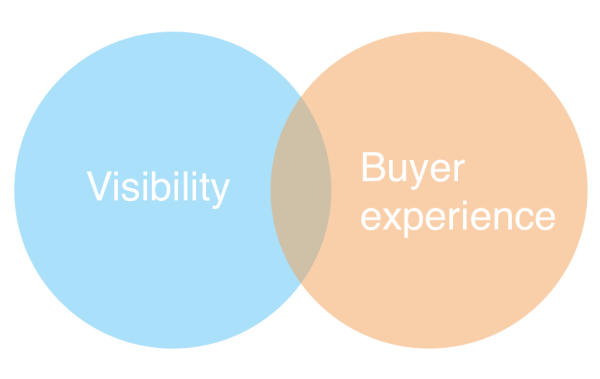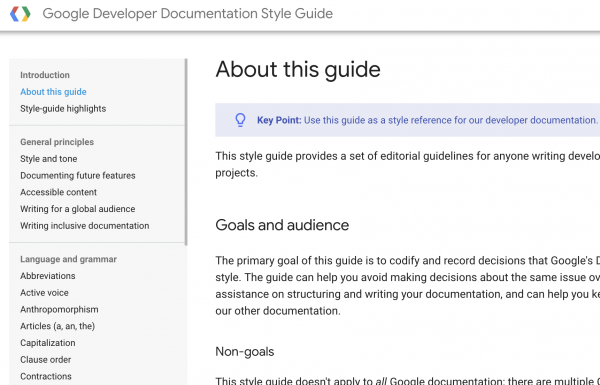

The challenge of striking a balance between your SEO goals and user experience is nothing new for marketers, but in recent years, the balance has shifted. Instead of considering the needs of robots and algorithms first, content needs to be crafted with the needs of a company’s target prospects in mind.
Keyword density or bounce rate are not presiding goals in and of themselves. Instead, brands must create content that nurtures and educates prospective customers as they progress along the sales funnel. Understanding the needs of a niche readership and focusing on their needs helps to create relevancy as you nurture these readers and give them reasons to convert. Matching this content to what customers want and need encourages the positive signals that Google equates with good results. Ultimately, brands must look beyond traffic metrics and examine the quality of outcomes that align with business goals.
High quality content that performs well is crafted with a purpose and based on concepts instead of keywords. While a robot or algorithm can’t necessarily assign your content a quality score, the engineers behind them have noticed the way searchers behave when they find content that helps them, and now associate certain behaviors with high quality content, including:

Instead of thinking about the topic of the article as a starting point, consider crafting pieces around a purpose. To do this, take some time to define what engagement metrics are important to you and what kinds of content help to drive those metrics up. Incorporate multiple content types to cater to the way your potential buyers might prefer to conduct research, like:
Constantly creating new relationships and evolving them is a key part of the content engine. If the purpose of a content piece is to generate interest from totally new prospects, identify those queries that buyers at the top of your funnel might need to be answered. These might include:
See also: How to Bring in Better Qualified Marketing Leads to Your B2B Funnel
Google’s Developer Documentation Style Guide suggests that you convey purpose from the start with the tone of your piece.

Match your tone, voice, and substance to your persona’s needs and preferences, as well as how you want to appear as an organization. Are you a friendly, helpful resource or an authoritative pacesetter in the industry? No matter which voice you choose, use short sentences for easy readability on any device.
Nailing the intent behind a search and the format that searchers will prefer the most helps keep your content evergreen and relevant for the longest possible time.
Targeting intent behind keywords begins with long tail keyword research and forming a larger picture of the searcher. Queries can hold important clues to where searchers are in the buyer’s journey. For example, queries that begin with “benefits of” or end with “reviews” indicate that prospecting are still gathering information as they decide about a product or service. Queries that include a brand name or product name indicates the searcher is a little farther down the funnel, has done the initial research and now has a few vendors in mind. Matching concepts and topics with keywords leads to stronger content pieces that answer a prospect’s key questions while naturally increasing your ranking for those keywords. Content marketing plays a dynamic--not a single purpose role.
The format is another key to presenting the most relevant result that gets the most clicks. Are your buyers looking to scan a list of key features? Do they need a video to explain your service fully, and how likely will they be to watch this video? What social platform are they spending time on, and how can you grab their attention?
Focus less on manipulating users to find (discover) your website or brand, and focus more on making sure you are meeting their goals when they arrive.
Further reading: Mistakes Small Businesses Make with SEO
Once you have a wealth of content, the conversions aren’t going to start pouring in. There may be adjustments to be made and improvements to try. Deeper metrics can provide more insight on how visitors are behaving, and what content pieces are lacking.
Too much of today’s SEO work focuses on creating a high volume of traffic, without stopping to consider what happens after prospective leads hit the page. While traffic increases are important, the traffic must include prospective buyers who are interested in your product or service and likely to convert at some point to be worth the time and effort. SEO is nothing without relevant content pieces that nurture prospects until they convert. Creating quality content takes forethought, research and effort, but it also powers a real SEO strategy that search engines and human readers will reward equally.
by Jonathan Franchell, CEO of Ironpaper - For more tips and hacks: Need to remove a new line after h1 tags? Both web designers and SEO practitioners need to employ headline tags: H1, H2, H3 in several ways to improve web page structure and tag...

The Crowded Arena of the IT Marketplace Updated December 2024 The Information Technology (IT) landscape is experiencing rapid growth and intensifying competition. IT spending is projected to reach nearly 5.1 trillion U.S. dollars in 2024, a...

Updated December, 2024 The field of digital marketing is evolving rapidly in response to new technology and changing buyer expectations. To help career-minded marketers, we’ve rounded up the top 10 skills needed to succeed in the field. These are...

The marketing industry is transforming significantly due to generative AI and increasing market complexity. Gartner's prediction of a 25% decline in traditional search traffic suggests that the era of search engines is dying. AI tools, particularly...
